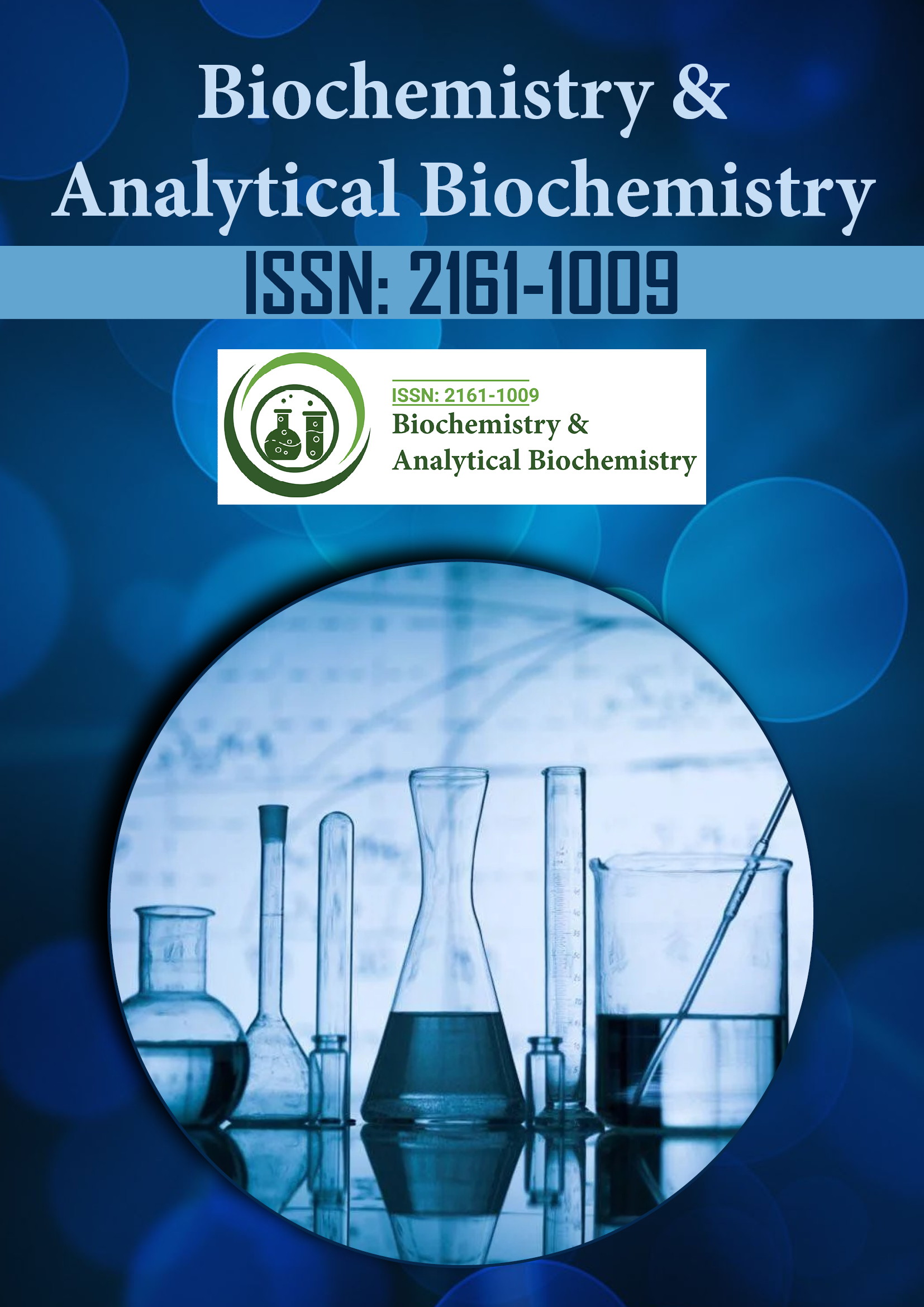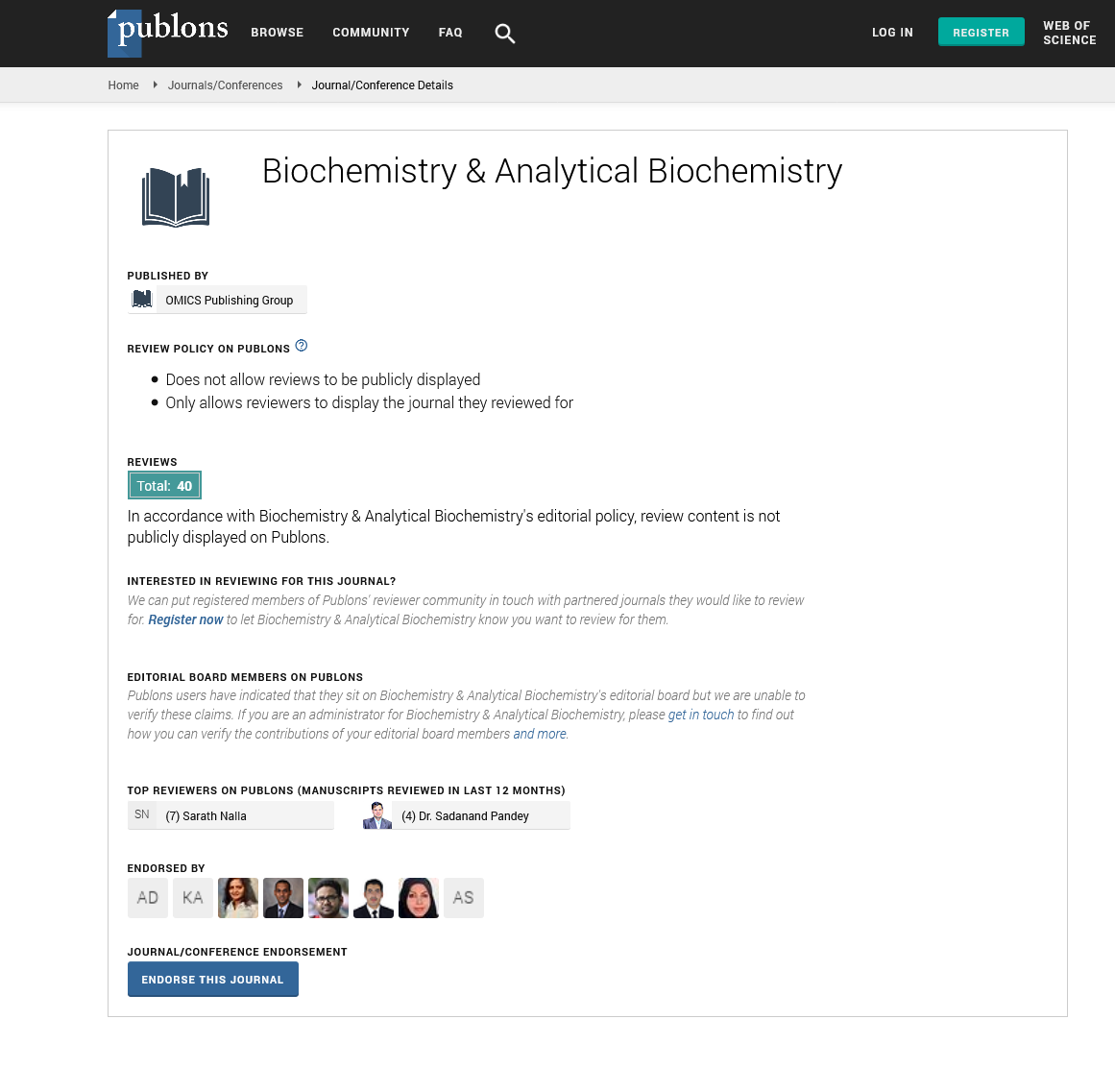Indexed In
- Open J Gate
- Genamics JournalSeek
- ResearchBible
- RefSeek
- Directory of Research Journal Indexing (DRJI)
- Hamdard University
- EBSCO A-Z
- OCLC- WorldCat
- Scholarsteer
- Publons
- MIAR
- Euro Pub
- Google Scholar
Useful Links
Share This Page
Journal Flyer

Open Access Journals
- Agri and Aquaculture
- Biochemistry
- Bioinformatics & Systems Biology
- Business & Management
- Chemistry
- Clinical Sciences
- Engineering
- Food & Nutrition
- General Science
- Genetics & Molecular Biology
- Immunology & Microbiology
- Medical Sciences
- Neuroscience & Psychology
- Nursing & Health Care
- Pharmaceutical Sciences
Perspective - (2023) Volume 12, Issue 6
Applications of Xenobiotic Nucleic Acids in Synthetic Biology
Fang Lang*Received: 22-Nov-2023, Manuscript No. BABCR-23-24436; Editor assigned: 24-Nov-2023, Pre QC No. BABCR-23-24436 (PQ); Reviewed: 08-Dec-2023, QC No. BABCR-23-24436; Revised: 15-Dec-2023, Manuscript No. BABCR-23-24436 (R); Published: 25-Dec-2023, DOI: 10.35248/2161-1009.23.12.522
Description
DNA, the primary genetic component of all living life forms on the earth, can be synthetically modified to incorporate unique capabilities. The fundamental synthetic and underlying limits for hereditary data storage, heredity, and progression have been explained, and several Xenobiotic Nucleic Acids (XNAs) with non-accepted structures are generated as alternative hereditary materials. In any case, replacing DNAs with XNAs in living cells is still extremely challenging. This study encompasses a few ongoing studies in which hereditary data capacity and proliferation are achieved by expanding hereditary frameworks using XNAs.
DNA is the primary genetic material of all living life forms on Earth, storing and disseminating hereditary data. DNA is widely accepted to be composed of four nucleases (A-Adenine, GGuanine, C-Cytosine, and T-Thymidine), 2′-deoxyriboses, and charged phosphate spines, with an unusually homogeneous architecture. Four hereditary letters in order structure two base matches (A: T and G: C) while following the correlative guideline, which is essential for the creation of a twofold helix structure and hereditary data transmission.
Engineered science is such a broad and multifaceted discipline that each new study appears to take into a new area of research that I hadn't examined before. Xeno Nucleic Acids, or XNAs, are completely new particles with informational capacity similar to DNA and RNA. There are numerous reasons to comprehend the restrictions of natural or compound data storage. It is truly amazing that the anomaly exists by any stretch of the imagination; their genome is a seriously amazing 46 particle arrangement for every chromosome is, on a basic level, a massively lengthy yet complete atom of DNA.
They know for certain that DNA was not the primary data storage particle since DNA is entirely dependent on a protein duplicating component that was not present at the beginning of life. RNA has been proposed as an expected first particle because they recently discovered that RNA particles can perform both data storage and synergist functions.
On the other hand, focussing on new nucleic acids is important for biotechnology. Engineered biochemistries could include synthetic organic entities or treatments that do not affect the arrangement of inherited traits shared by all life. As one commentator suggested, antisense XNAs may be used to silence RNAs in a matching sequence. Many hereditary infections, including cancerous growths, could be cured by quieting defective hereditary records. Furthermore, unlike regular RNA, XNAs are not targeted for degradation by cells. The scientists created nucleic acids with the same four bases-A, C, T, and G-but with different sugars.
All nucleic acids have an exchanging sugar phosphate spine with bases separating the sugars. Engineered nucleic acids, in general, must be artificially integrated. Nature's chemicals handle DNA and RNA, not XNAs, nowhere near planning molecules without any preparation for any reason. In any event, the inventors had the choice of advancing compounds that arrived in the middle: XNA is being duplicated into DNA, and DNA is being duplicated into XNA.
These phages have explicit metabolic pathways that produce altered intracellular pools to combine adjusted DNA that is capable of avoiding have DNA fix frameworks, providing a potential strategy for utilizing living cells with designed qualities that mimic phage qualities for the fuse of engineered nucleotides into deceptively constructed hereditary frameworks. A progression of Xenobiotic Nucleic Acids (XNAs) are joined by substituting regular bases, sugars, and phosphate linkages with their unnatural partner to investigate the important substance and primary boundaries for hereditary data storage, heredity, and development. Sugar modified XNAs, phosphate adjusted XNAs, and base adjusted XNAs or their mixture result from changes in three nucleotide subunits.
Citation: Lang F (2023) Applications of Xenobiotic Nucleic Acids in Synthetic Biology. Biochem Anal Biochem. 12:522.
Copyright: © 2023 Lang F. This is an open-access article distributed under the terms of the Creative Commons Attribution License, which permits unrestricted use, distribution, and reproduction in any medium, provided the original author and source are credited.

